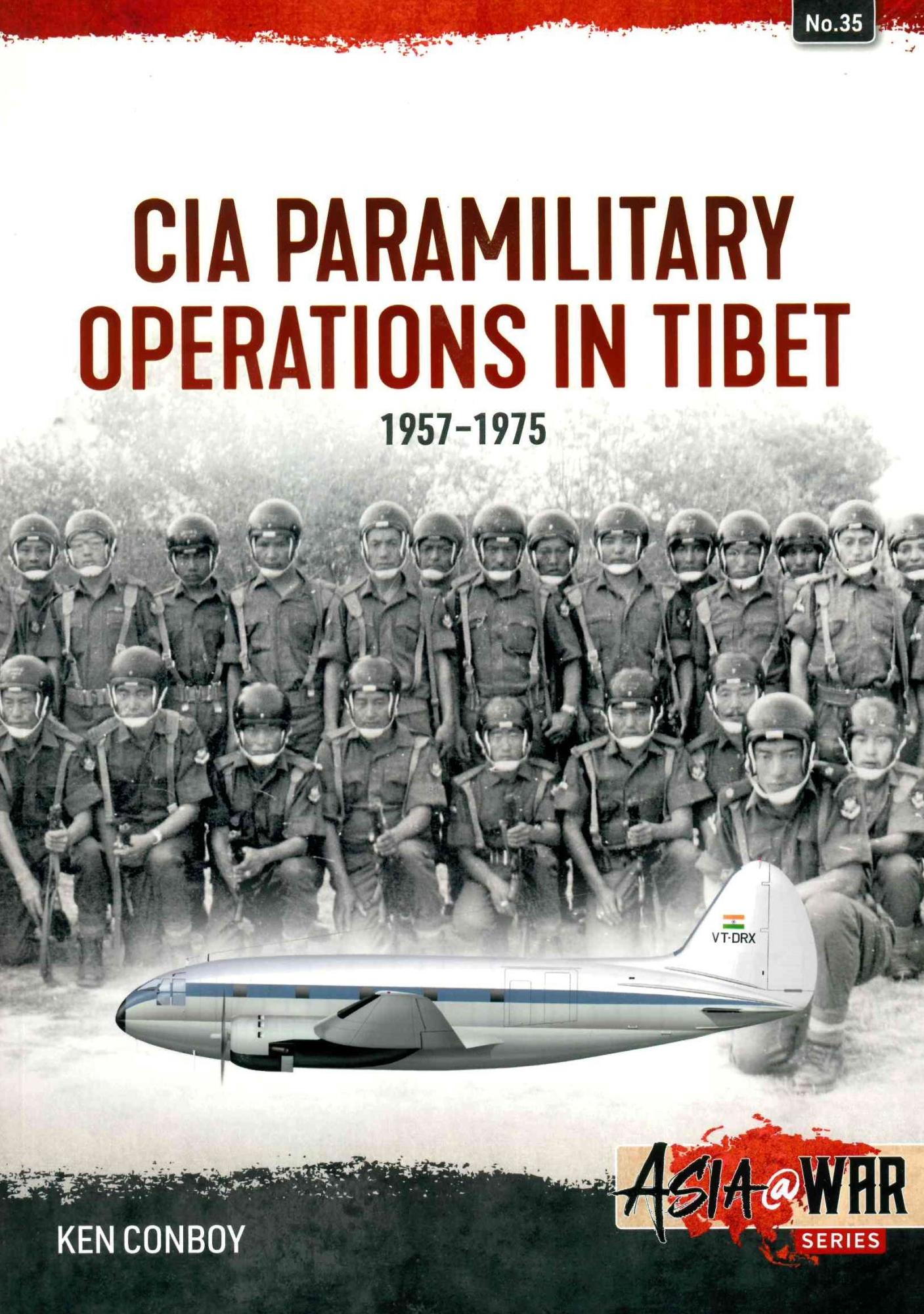CIA Paramilitary Operations in Tibet, 1957-1975
Tibet covers the size of the American Southwest, with an average elevation of 14,000ft (4,380m), surrounded by some of the highest mountain ranges in the world with the Himalayas to the south, the Karakoram to the west, and the Kunlun to the north. The terrain of north and western Tibet is barren mountain desert, the northeast province of Amdo resembles the Mongolian steppes, the southeast province of Kham drops slightly in altitude and the topography, according to the author,
“devolves into exaggerated slopes, impossibly narrow valleys, and gnarled conifers normally associated with Chinese watercolors. It is the central plateau, however, that has become synonymous with Tibet…it is a harsh, rocky land of hypnotic beauty where, because of the altitude, light seems to intensify colour and detail.”
Geographically, Tibet is bordered to the north and east by China, and from the northwest to southeast, India, Napal, Sikkim, Bhutan and Burma. Tibet has a history that spans time immortal and is placed in the crossroads of empires.
Author Ken Conboy writes
“If religion is the lifeblood of Tibet, the Dalai Lama is its heart. A title bestowed by the Tibetan people to the reincarnated leader from the most dominant of the four major schools of Tibetan Buddhism, the Dalai Lama was in his 14th incarnation by the time of Beijing’s 1950 invasion of Kham (Tibet). He was also just 15 years old, still three years shy of completing his extensive monastic studies.”
Thus the stage was set for the CIA’s nearly two decades long anti-Chinese covert operation to “keep the political concept of an autonomous Tibet alive within Tibet and among several foreign nations.” It was also a key part of the new Cold War, largely played out in Asia in Korea and Vietnam.
Ken Conboy is a prolific writer of American involvement in Asian wars – both covert and overt. He is a former deputy director of Washington DC think tank, Asian Studies Center, where he focused on South and Southeast Asia. Ken has written nearly 20 books about Asian military history and intelligence operations. He is a graduate of Georgetown University’s School of Foreign Service and of Johns Hopkins’ School of Advanced International Studies, was also a visiting fellow at Chulalongkorn University in Bangkok. Ken Conboy has the background to write about interesting, little-known conflicts, and his talent is highlighted in this engaging book.
American interests in stemming communism, evolved into a covert war in Tibet, primarily through the Central Intelligence Agency (CIA) and its covert airline Civil Air Transport and an USAF special operations squadron operating a pair of C-54s and a lone C-118. Other key allies in the fight against China were India and Sikkim.
The book is presented logically, complete with photographs of the major leaders and operations, maps, tables and even a color profile section composing the following twenty chapters:
- First Contact
- Tightrope
- Brothers Divine
- Saipan
- Growing Pains
- The Farm
- Whale
- Camp Hale
- Hitting their Stride
- Markham
- Mustang
- Favoured Son
- Chakrata
- Oak Tree
- The Joelikote Boys
- Borrowed Time
- Revolution
- Civil War
- A Pass Too Far
- Second Wind
This book is a good history of this little-known war in Tibet against the Chinese. Ken Conboy does an amazing job breaking down this complex and confusing nearly twenty year covert operation. The United States, primarily through the CIA, but also assisted by the Departments of Defense and State, achieved their mission to keep an autonomous Tibet alive. The American involvement ended in 1972 after President Nixon’s visit to China to foster better relations. The Dalai Lama criticized the decision stating that it proved that the US campaign was never to support the people of Tibet.
Tibetan operations remained covert for a long time afterward and it was “Not until 2020 would the SFF (Special Frontier Force – a clandestine group of Tibetan fighters, augmented with Indian and Gurkha troops) fully emerge from the shadows. This came about following heightened border tensions with China…” when two SFF triggered a landmine resulting in one killed and one seriously injured. “Their sacrifices soon came to be widely lauded by Indian politicians and in the media. But while SFF’s existence had now been openly acknowledged and their cause boosted, their homeland has yet to be set free.”
Modelers and historians will enjoy this book with color images of Helio 500 Twin Courier aircraft, color profile images including C-46Ds, Helio 500 Twin Courier, Boeing 727, and SFF insignia. Black and white photographs show recoilless rifles, small arms, Mi-4 helicopter and military personnel.
Ken Conboy has provided the Asia@War series a concise, well researched and easy to read book to help fill in gaps in the little-known covert wars in Asia. The supporting wars to America’s Cold War are now just coming into mainstream consciousness. These wars and operations were just as important as the main effort, and it is good to see these dedicated people get their due time in the limelight.
Profuse thanks to Casemate (https://www.casematepublishers.com) and IPMS/USA for providing the review sample.












Comments
Add new comment
This site is protected by reCAPTCHA and the Google Privacy Policy and Terms of Service apply.
Similar Reviews